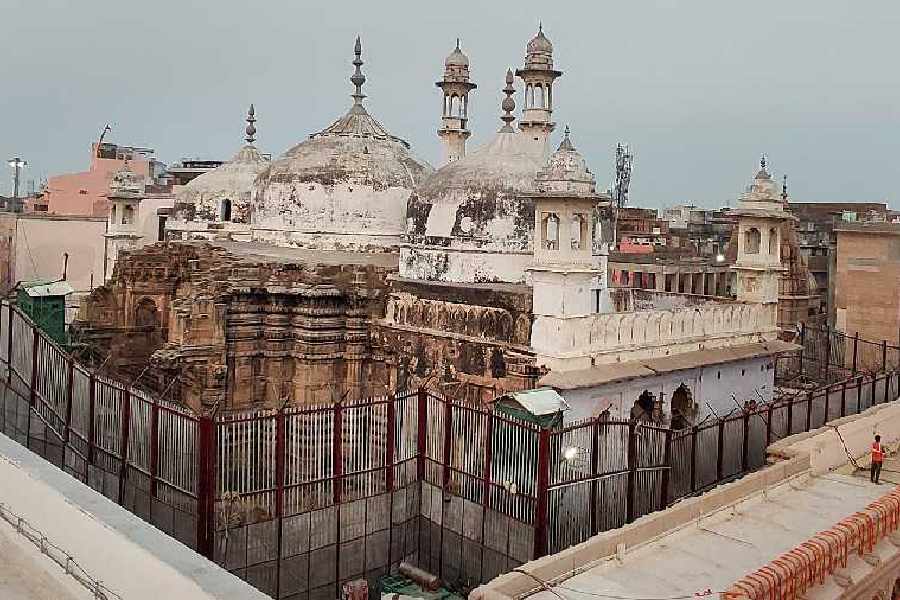The Allahabad High Court on Friday ordered authorities to determine the age of the structure claimed to be a shivling in the Gyanvapi mosque in Varanasi using modern technology.
It set aside an October 14 order of the Varanasi District Court that rejected a plea for scientific investigation, including carbon dating, of the structure found in May 2022 during a court-mandated survey of the Gyanvapi mosque located next to the Kashi Vishwanath temple.
The high court ordered authorities to ensure no harm is done to the structure, the Hindu petitioners claim is a shivling. The mosque authorities say it is part of a fountain in the 'wazu khana', where ablutions are performed before namaz.
Justice Arvind Kumar Mishra passed the order on a revision petition filed by Laxmi Devi and three others challenging the Varanasi court order.
The court had obtained a report from various institutions, including the IITs in Kanpur and Roorkee and Birbal Sahni Institute of Lucknow, before ordering the authorities to determine the age of the structure.
The report says direct dating of the structure is not possible and the age can be ascertained with proxy dating of materials, which can "correlate with the establishment of the lingam if there is any".
"This needs a thorough study of the materials surrounding the lingam," it adds.
The report also suggests the dating of some organic materials below the surface can ascertain the age but it needs to be established that they are related to the structure.
The court considered suggestions of Prof Javed N Malik of Department of Earth Sciences, IIT Kanpur.
Prof Malik suggested that to understand the buried material and structure it would be essential to undertake a detailed subsurface survey through Ground Penetrating Radar (GRP). This will be helpful towards identifying the remains of the ancient structures buried if any at the site, he added.
The high court directed the Varanasi district judge to proceed, in accordance with law, on the application by the Hindu worshippers' for conducting a scientific probe of the ‘shivling’, paving the way for determining the age of the structure.
The Archaeological Survey of India (ASI) in its 52-page report had given the opinion that the age of the structure can be determined through scientific method without causing any harm to the structure. Its opinion was based on studies conducted by IIT Kanpur, IIT Roorkee, Birbal Sahni Institute, Lucknow, and one more educational institute.
Advocate Vishnu Shankar Jain appearing for the revisionists argued that the district judge had "passed the impugned order without any basis" as it should have called for expert opinion from the ASI on whether carbon dating could be done without causing any harm.
Additional Advocate General MC Chaturvedi, assisted by Chief Standing Counsel Bipin Bihari Pandey, appeared for state government. He said, "If carbon dating and nature of the structure can be determined without causing any harm to the structure then the state has no objection to it so that real nature of structure could be found." On November 4, 2022, the high court had sought the response of ASI in the matter and directed the ASI Director General to submit his opinion whether investigation of the said structure, if examined through carbon-dating, ground-penetrating radar (GPR), excavation and other methods adopted to determine its age, nature and other relevant information, is likely to damage it or a safe evaluation about its age can be done.
A suit was filed in the Varanasi District Court asserting rights to worship Maa Shringar Gauri and other deities which the petitioners said are situated inside mosque complex.
On April 8, 2021, a Varanasi court was directed to conduct a comprehensive survey of Gyanvapi mosque complex and during the survey the purported ‘shivling’ was found on May 16, 2022.
Except for the headline, this story has not been edited by The Telegraph Online staff and has been published from a syndicated feed.











